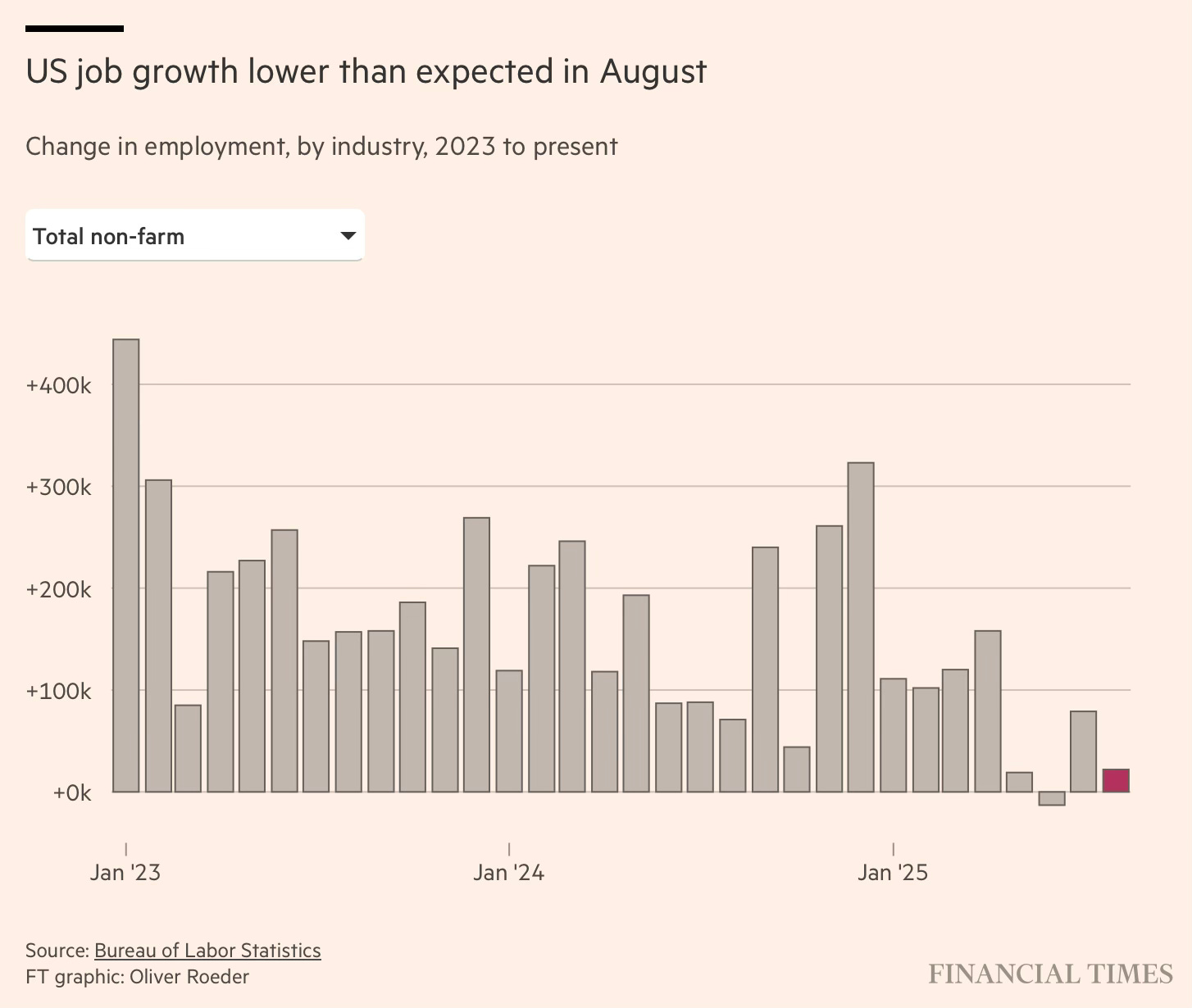The US jobs machine has ground to a halt
Five charts to start your day
The American jobs machine has ground to a halt. With just 22,000 positions added in August, this is the weakest showing outside of pandemic disruptions since the depths of the Great Recession. What we are seeing is the starkest warning yet from the labour market that something is fundamentally wrong with the US economy.
Manufacturing shed 12,000 jobs for the fourth consecutive month, whilst the unemployment rate climbed to 4.3 per cent, a level not seen since 2021. These are not the numbers of an economy responding to promised stimulus from tax cuts and deregulation; they are the numbers of an economy paralysed by uncertainty.
CHART 1 • The US jobs machine has ground to a halt
This chart from the FT, which was published last Friday when the report came out, tells a story of decline that began well before August's catastrophic print.
Since January, monthly job gains have averaged just 74,750, the slowest pace for this period since 2010. The June revision now shows the economy actually lost 13,000 jobs that month, breaking what had been the second longest streak of employment expansion on record. The labour market is losing altitude rapidly, with downward revisions suggesting the economy is heading into turbulence without achieving the much-hoped-for soft landing.
What makes this moment particularly treacherous is the spectre of stagflation that has emerged from the data. Leading economists have dramatically raised their recession probabilities from 10 to 30 per cent in mere weeks, comparing the current situation to attempting major structural repairs whilst in motion. Strip away government-supported healthcare hiring, and the private economy is actually contracting. The cyclical categories of the private service sector have collectively turned negative over the past four months. This is not cyclical weakness; it is structural breakdown.
President Trump blames Jerome Powell for being too late with rate cuts, yet the US Federal Reserve faces an impossible dilemma. Markets are pricing in an 88 per cent probability of a September cut, but cutting rates whilst inflation remains elevated risks making the situation worse. The parallels with the stagflationary 1970s are becoming uncomfortable. Whether this becomes a moment of renewal or a slide into economic stagnation will determine not just America's economic trajectory, but the fate of the global financial system that depends upon it.
Source: Financial Times
Now I know it's only Monday, but a lot has happened over the last week and that's why I have five charts to share with you today. These are five charts that I thought about quite intensely over the weekend. I've given you the first one so if you would like to view the rest, please consider becoming a paid subscriber to my newsletter.




